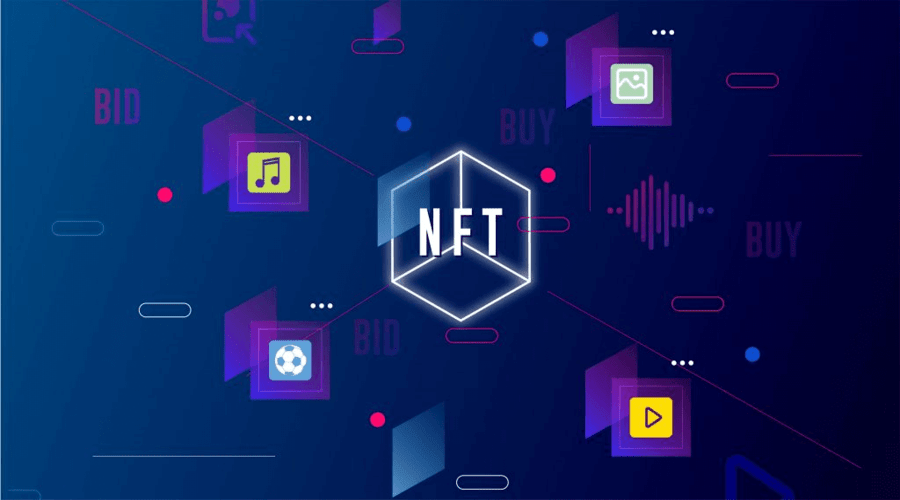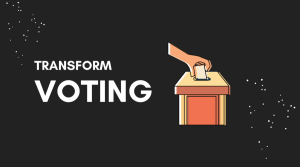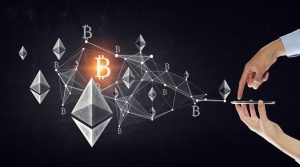Introduction
Art and collectibles have long been associated with exclusivity and limited access. However, the emergence of Non-Fungible Tokens (NFTs) has brought about a revolutionary change in the way art and collectibles are perceived and traded. In this article, we will explore the impact of NFTs on making art and collectibles more accessible. From understanding what NFTs are to examining their advantages and impact on artists, as well as the challenges and future possibilities, we will delve into the world of NFTs and its transformative effect on the art and collectibles market.
What are NFTs?
NFTs, or Non-Fungible Tokens, are unique digital assets that are stored on a blockchain. Unlike cryptocurrencies such as Bitcoin or Ethereum, which are fungible and can be exchanged on a one-to-one basis, NFTs are indivisible and possess distinct properties that make them one-of-a-kind.
The Rise of NFTs
In recent years, NFTs have gained significant popularity, attracting attention from artists, collectors, and investors worldwide. The ability to establish verifiable ownership and scarcity in the digital realm has sparked a new wave of interest and participation in the art and collectibles market.
Advantages of NFTs
- Authenticity and Ownership: NFTs use blockchain technology to establish verifiable ownership and provenance of digital assets. This brings a level of authenticity and trust to the digital world, as each NFT has a unique identifier that can be traced back to the original creator or owner.
- Immutable and Transparent: NFT transactions are recorded on a blockchain, which ensures that the ownership history and transaction details of an NFT cannot be altered or tampered with. This transparency adds a layer of security and trust to the NFT market.
- Increased Revenue Streams for Creators: NFTs provide artists, musicians, and content creators with new opportunities to monetize their work. By tokenizing their creations as NFTs, they can sell them directly to collectors, eliminating the need for intermediaries and potentially earning higher profits.
- Royalty Mechanism: NFTs can include smart contracts that automatically distribute royalties to creators each time the NFT is resold. This feature ensures that artists continue to benefit financially from the increasing value of their work in the secondary market.
- Fractional Ownership and Liquidity: NFTs can be divided into smaller fractional shares, allowing multiple investors to own a portion of a valuable asset. This fractional ownership model democratizes access to high-value assets and provides liquidity by enabling users to buy and sell fractions of NFTs.
- Gamification and Interactivity: NFTs can be used in gaming and virtual worlds, enhancing user experiences by enabling ownership of unique in-game items, characters, or virtual real estate. This creates new possibilities for immersive and interactive gameplay.
- Enhanced Collectibles Market: NFTs have revitalized the concept of digital collectibles. With NFTs, collectors can own unique digital items, such as trading cards, virtual artwork, or virtual fashion, which can be displayed in virtual galleries or used in virtual reality environments.
- Traceable Digital Rights and Licensing: NFTs can be used to manage digital rights and licensing for various types of media, such as music, videos, and e-books. This allows for more efficient tracking of intellectual property, enabling creators to enforce copyright and control the distribution of their work.
- Philanthropic Opportunities: NFTs can be leveraged for charitable purposes, as artists and creators can tokenize their work and donate a portion or all of the proceeds to causes they support. This opens up new avenues for fundraising and social impact.
- Innovation and Exploration: NFTs have sparked a wave of innovation and experimentation, encouraging creators and developers to explore new possibilities in the digital realm. This fosters a dynamic and evolving ecosystem that continues to push the boundaries of what is possible with digital assets.
Overall, NFTs offer a range of advantages, from empowering creators and providing new revenue streams to enhancing digital ownership and creating unique experiences in various industries.

The Impact on Artists
Empowering Creators
NFTs have democratized the art world by providing artists with greater control over their work and the ability to monetize their creations directly. This removes barriers to entry and allows artists to gain recognition and financial support based on the merit of their work, rather than relying solely on established institutions or galleries.
Monetization Opportunities
NFTs have created new avenues for artists to monetize their art beyond traditional sales. Through the use of smart contracts, artists can earn royalties on secondary market sales, ensuring a continuous revenue stream from their creations. This provides long-term sustainability and financial independence for artists, fostering a more inclusive and equitable art ecosystem.
Collectibles and NFTs
Digital Art Collectibles
NFTs have revolutionized the concept of collectibles by introducing digital art collectibles. These unique digital assets range from virtual trading cards to virtual real estate and virtual fashion items. Collectors can own and trade these digital collectibles securely on blockchain platforms, expanding the possibilities of what can be collected and cherished.
Tokenization of Physical Items
Beyond the digital realm, NFTs have also facilitated the tokenization of physical items. Tangible assets such as rare artifacts, limited edition merchandise, or even real estate can be represented as NFTs, unlocking liquidity and fractional ownership opportunities. This opens up new markets and investment possibilities for collectors and enthusiasts.
Challenges and Limitations
- Environmental Impact: The energy consumption associated with blockchain networks, particularly those using proof-of-work consensus algorithms like Ethereum, has raised concerns about the environmental sustainability of NFTs. The high computational requirements for mining and validating transactions can contribute to carbon emissions.
- Scalability and Cost: Blockchain networks supporting NFTs can experience scalability issues, leading to high gas fees and slower transaction processing times. These limitations make it challenging for NFT platforms to handle a large number of users and transactions efficiently.
- Lack of Regulation: The NFT market is currently largely unregulated, which poses risks for buyers and sellers. The absence of clear legal frameworks and consumer protections can lead to scams, copyright infringement, and disputes over ownership and authenticity.
- Volatility and Speculation: The value of NFTs can be highly volatile, with prices fluctuating dramatically. This volatility creates a speculative market where prices may not necessarily align with the underlying value of the digital assets, potentially leading to market instability.
- Copyright and Intellectual Property Concerns: While NFTs provide a means to prove ownership of digital assets, they do not automatically address issues related to copyright infringement or intellectual property rights. The potential for unauthorized duplication or distribution of digital content still exists, posing challenges for creators and rights holders.
- User Experience and Accessibility: The current user experience of interacting with NFTs can be complex and confusing for non-technical users. The process of buying, selling, and managing NFTs often requires familiarity with cryptocurrency wallets and blockchain platforms, limiting accessibility for a broader audience.
- Interoperability: NFTs built on different blockchain networks may not be easily transferable or compatible with each other. Lack of interoperability can fragment the NFT market and limit the ability to exchange or trade assets across different platforms or ecosystems.
- Bubble and Market Saturation: The rapid growth of the NFT market has raised concerns about the potential for a speculative bubble and oversaturation of the market. The influx of low-quality or derivative NFTs could dilute the value and interest in the overall market.
- Long-Term Storage and Preservation: As digital assets, NFTs rely on the availability and longevity of the underlying blockchain networks. If a network becomes obsolete or faces technical challenges in the future, it could impact the accessibility and preservation of NFTs.
- Perception and Skepticism: Some individuals and organizations remain skeptical about the long-term value and relevance of NFTs. The perception of NFTs as a speculative trend or a bubble can hinder wider adoption and acceptance in certain circles.
The Future of NFTs
Expanding Applications
As the technology evolves, NFTs are expected to find applications beyond art and collectibles. Industries such as gaming, music, virtual reality, and even identity verification can benefit from the unique properties of NFTs. This presents a vast landscape of possibilities and innovation yet to be explored.
Democratizing Art
Ultimately, NFTs have the potential to democratize art by removing barriers to access, empowering creators, and fostering a more inclusive art ecosystem. By embracing the transformative power of NFTs, we can pave the way for a future where art and collectibles are accessible to all, fostering creativity, and celebrating diverse voices.
Conclusion
The emergence of NFTs has brought about a paradigm shift in the art and collectibles market. By leveraging blockchain technology, NFTs have made art and collectibles more accessible, empowering creators, and redefining the concept of ownership. While challenges such as environmental concerns and market volatility need to be addressed, the future of NFTs holds immense potential in expanding applications and democratizing the art world.
FAQs
- How do NFTs work?
NFTs work by leveraging blockchain technology to create unique digital assets that can be bought, sold, and owned securely.
- Can I create my own NFTs?
Yes, anyone can create their own NFTs by minting them on various blockchain platforms.
- Are NFTs only for digital art?
No, while NFTs are commonly associated with digital art, they can also represent physical items and assets through the process of tokenization.
- How can artists benefit from NFTs?
NFTs provide artists with new opportunities for monetization, direct engagement with collectors, and the ability to earn royalties on secondary market sales.
- Are NFTs a passing trend?
While the NFT market may experience fluctuations, the underlying technology and its potential applications indicate that NFTs are here to stay, transforming various industries.



